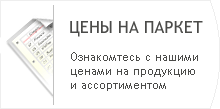Terms and explanations
Parquet slat — a detail from the massive wood with mutual parallel milled face and profiled edge, with the help of which it is connected with the neighboring slats in the course of laying the parquet floor.
Tongue — a prominent part of the parquet slat, which serves for the connection with the neighboring slats during the laying the parquet floor.
Groove — a hollow in the flank and butt-ended edge of the parquet slat, in which the groove gets in for the connection with a neighboring slat.
Wear layer — the upper layer of the parquet slat from the facial side to the upper part of the groove or tongue, the deterioration of which defines the durability of the parquet covering.
The lower part — a part of the thick parquet slat from the back side to the lower edge of the tongue or groove.
The facial side of the parquet slat — the outer surface of the wear layer of the parquet slat.
The opposite side of the parquet slat — the surface opposite the facial side of the parquet slat.
The right parquet slat — a parquet plank, which, if you look at the facial side the butt-end of the tongue is on the right, and the tongue on the edge — from the observer’s side.
The left parquet slat — a parquet slat, which, if you look at the facial side the butt-ended tongue is on the left, and the tongue on the edge — is from the observer’s side.
 |
| Pic. 1: Example of block parquet slat (5 kB) |

